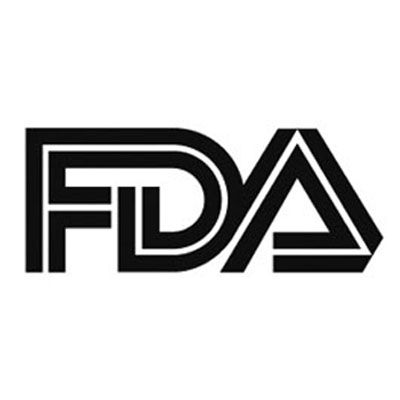FDA Grants Breakthrough Therapy Designation to Pevonedistat in Higher-Risk MDS
The FDA granted a Breakthrough Therapy Designation to the investigational agent pevonedistat as treatment of patients with higher-risk myelodysplastic syndrome.

The FDA has granted a Breakthrough Therapy Designation to the investigational agent pevonedistat as treatment of patients with higher-risk myelodysplastic syndrome (MDS), according to a press release from Takeda Pharmaceutical Company Limited.1
Should this agent receive approval, the first-in-class NEDD8-activating enzyme inhibitor, pevonedistat, would be the first novel treatment for this patient population in more than a decade. The current treatment landscape is limited to hypomethylating agents alone, and the outcomes of patients with higher-risk MDS remain poor.
“Higher-risk MDS is associated with poor prognosis, diminished quality of life and a higher chance of transformation to acute myeloid leukemia, another aggressive cancer. The combination of pevonedistat and azacitidine (Vidaza) is a promising therapeutic approach with the potential to be the first novel treatment advancement for higher-risk MDS in more than 10 years,” said Christopher Arendt, head, Oncology Therapeutic Area Unit, Takeda, in a statement. “We thank the FDA for recognizing pevonedistat, and the urgency to develop innovative therapies that address critical treatment needs for higher-risk MDS, a patient population with few options.”
During the 2020 American Society of Clinical Oncology (ASCO) Virtual Scientific Meeting, pevonedistat was evaluated in combination with azacitidine compared with azacitidine alone in a phase 2 clinical trial of patients with higher-risk MDS, chronic myelomonocytic leukemia, or low-blast acute myelogenous leukemia. The rationale for this trial is based on the fact that pevonedistat disrupts the proteasomal degradation of select proteins and promising clinical activity, as well as good tolerability, has been observed with this agent in combination with azacitidine in patients with acute myeloid leukemia.2
Overall, 120 patients were assessed in this study, who were randomized 1:1 to receive azacitidine with or without pevonedistat. Pevonedistat was given in a 20 mg/m2 intravenous dose on days 1, 3, and 5. Azacitidine was administered intravenously/subcutaneously on days 1 through 5, 8, and 9 at 75 mg/m2 on a 28-day cycle until patients experienced unacceptable toxicity, relapse, transformation to acute myeloid leukemia, or disease progression. The primary end point of the trial was overall survival (OS).
In the combination arm, patients received a median of 13.0 cycles of treatment compared with 8.5 cycles in the monotherapy arm. After a median follow-up of 21.4 months with the combination and 19.0 months for the monotherapy, the median OS in the intent-to-treat arm was 21.9 months compared with 19.0 months, respectively, (HR, 0.80; 95% CI, 0.51-1.26; P =.334).
In a subanalysis of patients with higher-risk MDS (n =67), the median OS with the combination was 23.9 months compared with 19.1 months with the monotherapy (HR, 0.70; 95% CI, 0.39-1.27; P =.240).
The event-free survival (EFS) was longer in the intent-to-treat population with the combination, where the median EFS was 21.0 months compared with 16.6 months with the monotherapy (HR, 0.65; 95% CI, 0.41-1.02; P =.060). In the higher-risk MDS arm, the median EFS was 20.2 months with the combination versus 14.8 months with the monotherapy (HR, 0.54; 95% CI, 0.29-1.00; P =.045).
Among 55 patients evaluable for response, the overall response rate (ORR) was 71%, which included 46% complete response (CR) plus CR with incomplete blood count recovery (CRi) rate, 5% partial response (PR) rate, and 20% hematologic improvement with the combination versus a 60% ORR with the monotherapy and a CR + CRi rate of 38%, a PR rate of 8%, and hematologic improvement in 15%.
Among patients with higher-risk MDS, the CR rate was 52% compared with 27% with the combination versus monotherapy, respectively (P =.050). The median dose intensity of azacitidine alone was 97% compared with 98% with the combination.
The study demonstrated a comparable safety profile for pevonedistat plus azacitidine compared with azacitidine alone. Grade 3 or greater adverse events occurred in 90% of patients with the combination versus 87% with the monotherapy, and the most common events included neutropenia (31% vs. 27%), febrile neutropenia (26% vs. 29%), anemia (19% vs. 27%), and thrombocytopenia (19% vs. 23%), respectively. Deaths occurred in 9% of patients inthe combination arm and 16% of the monotherapy arm.
Overall, the combination did not increase myelosuppression and patients were able to maintain the dose intensity of azacitidine. The improved response rates with the combination were not statistically significant, but the combination was favorable in patients with higher-risk MDS.
References
1. Takeda announces US FDA breakthrough therapy designation granted for pevonedistat for the treatment of patients with higher-risk myelodysplastic syndromes (HR-MDS). News Release. Takeda Pharmaceutical Company Limited. July 30, 2020. Accessed July 30, 2020. https://bit.ly/3hPZuRp
2. Ades L, Watts JM, Radinoff A, et al. Phase II study of pevonedistat (P) + azacitidine (A) versus A in patients (pts) with higher-risk myelodysplastic syndromes (MDS)/chronic myelomonocytic leukemia (CMML), or low-blast acute myelogenous leukemia (LB AML) (NCT02610777). J Clin Oncol. 2020: 38 (suppl; abstr 7506). doi: 10.1200/JCO.2020.38.15_suppl.7506